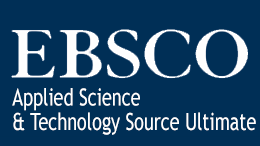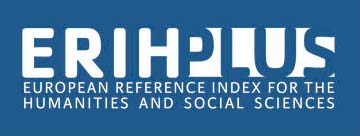Abstract
References
- National Center for Complementary and Integrative Health (NCCIH). Complementary, alternative, or integrative health: what's in a name? Accessed February 5, 2024. https://www.nccih.nih.gov/health/complementary-alternative-or-integrative-health-whats-in-a-name.
- World Health Organization. Traditional, complementary and integrative medicine. 2021. Accessed February 5, 2024, https://www.who.int/health-topics/traditional-complementary-and-integrative-medicine#tab=tab_1.
- Kusunoki J, Ikezaki S, Majima T. Factors associated with nursing practice for cancer patients using complementary and alternative medicine. Collegian. 2023;30(5): 668-675.
- Ng JY, Dhawan T, Fajardo RG, et al. The brief history of complementary, alternative, and ıntegrative medicine terminology and the development and creation of an operational definition. Integrative Medicine Research. 2023;12(4):100978.
- Craig R. Bloodletting and medical practice. Accessed February 5, 2024. https://medicine.uq.edu.au/blog/2021/06/bloodletting-and-medical-practice.
- Payyappallimana U, Venkatasubramanian P. Exploring ayurvedic knowledge on food and health for providing innovative solutions to contemporary healthcare. Frontiers in Public Health. 2016; 31(4):57.
- Gu S, Pei J. Innovating chinese herbal medicine: from traditional health practice to scientific drug discovery. Front Pharmacol. 2017; 8:381.
- Acupuncture Treatment Regulation, Official Newspaper No: 20885 (29.05.1991), Accessed February 15, 2024. http://www.resmigazete.gov.tr/arsiv/20885.pdf.
- Ministry of Health. Regulation on Traditional and Complementary Medicine Practices.27.10.2014; 29158. Accessed February 20, 2024. https://www.resmigazete.gov.tr/eskiler/2014/10/20141027-3.htm.
- Öztürk YE, Dömbekci HA, Seda Ü. Use of traditional complementary and alternative medicine. Journal of Integrative and Anatolian Medicine. 2020; 1(3): 23-35.
- Çekiç Ş, Canıtez Y, Çiçek F, Karalı Y, Karalı Z, et al. Investigation of the use of complementary and alternative medicine in childhood allergic diseases. Osmangazi Journal of Medicine. 2021;43(1): 76-81.
- Güveli H, Uzsoy A, Tuğçe Ö, et al. Determination of the frequency of complementary and alternative medicine use and dietary approaches in oncology patients. European Journal of Science and Technology. 2021;(21), 307-312.
- Şahin N, Aydın D, Berna A. Evaluation of nursing students' attitudes towards holistic complementary and alternative medicine. Balıkesir Journal of Health Sciences. 2019;8(1): 21-26.
- Liu YR, Jiang YL, Huang RQ, et al. Hypericum Perforatum L. Preparations for Menopause: A Meta-Analysis of Efficacy and Safety. Climacteric. 2014;17(4):325-35.
- Aboufaras M, Selmaoui K, Ouzennou N. Attitudes and beliefs towards the use of complementary and alternative medicine in cancer patients. European Journal of Integrative Medicine. 2023; 63: 102294.
- Ağan S. Attitudes and behaviours of health sciences faculty students towards complementary, alternative and modern medicine. 2019 (Doctoral dissertation, Marmara Universitesi (Turkey).
- Arı E, Yılmaz V. Attitudes and behaviours towards the use of complementary and alternative medicine. International Journal of Alanya Business Faculty. 2016; 8(1):1.
- Demir E. Knowledge, attitudes and behaviours of healthcare professionals towards traditional and complementary treatment methods. 2019 (Master's Thesis. Biruni University Institute of Health Sciences).
- McFadden KL, Hernández, TD, Ito T A. Attitudes toward complementary and alternative medicine influence its use. Explore. 2010; 6(6): 380-388.
- Arslan S, Gökçe E, Doğan SD, et al. Use of complementary and alternative medicine methods in individuals with cardiovascular disease. Cukurova Medical Journal. 2020; 45(4): 1644-1652.
- Yeşil H, Kıran B, Alkan H, et al. Using complementary and alternative medicine in patients with breast cancer diagnosis at afyon kocatepe university. Kocatepe Medical Journal. 2018;19:42-47.
- Dedeli Ö, Karadakovan A. Investigation of Complementary and Alternative Medicine Practice and Drug Use in the Elderly. Spatula Dd. 2011; 1: 23-32.
- Ak N, Aksakal F. Some knowledge and attitudes related to traditional and complementary medicine of applicants who apply to some family health centers. Journal of Traditional Medical Complementary Therapies. 2020;3(2):191-198.
- Boccolini PMM, de Lima Sírio Boclin K, de Sousa IMC, et al. Prevalence of complementary and alternative medicine use in Brazil: results of the National Health Survey, 2019. BMC Complement Med Ther. 2022;22(1):205.
- Wu H, Aziz AR, Dehghan M, et al. Use of complementary and alternative medicine for reducing fear of cancer recurrence among cancer survivors: Does it work? Asia-Pacific Journal of Oncology Nursing. 2023;10(10): 100278.
- Özer Z, Turan GB, Karaman S. Effects of fatalism perception and attitudes towards complementary and alternative medicine on medication adherence in patients with epilepsy. European Journal of Integrative Medicine. 2023; 102271.
- Sharifi F, Azizi H, Roudsari RL. Prevalence of complementary and alternative medicine use by Iranian infertile women: A multi-center cross-sectional study. Journal of Herbal Medicine. 2022; 32: 100548.
- Başer HY, Öztekin C. Complementary-Alternative Medicine Knowledge and Attitudes According to Living Regions in Corum, Türkiye. Hitit Medical Journal. 2023; 5(3): 221-226.
- Liem A, Newcombe PA. Indonesian provisional clinical psychologists’ knowledge, attitudes, and behaviours towards complementary-alternative medicine (CAM). Complement Ther Clin Pract. 2017; 28:204-211.
- Göçer Ş, Balbaloğlu Ö. Examination of the knowledge of individuals applying to physical therapy and rehabilitation outpatient clinic about traditional and complementary medicine practices. Journal of Health Sciences. 2021; 30: 118-125.
Abstract
Objective: This study was conducted to determine the attitudes of individuals aged 18-24 towards complementary alternative medicine.
Material-Method: The sample of the cross-sectional study, which is one of the analytical research types, consisted of 178 individuals between the ages of 18-24, at least primary education level, having technological devices and able to use internet networks. Descriptive statistics, independent groups t test, ANOVA, Mann Whitney U, Kruskal Wallis, Tukey tests and regression analysis were used in the evaluation of the data. The significance level was taken as 0.05 in the interpretation of the results.
Results: In the study, it was found that those who had a large family type, who thought that complementary or alternative medicine practices were beneficial, who recommended these practices to their close environment or friends, and who found complementary medicine practices more beneficial than the treatments applied in health institutions positively affected the scale mean scores (p<0.05).
Conclusion: In the study, it was determined that approximately half of the participants aged 18-24 years used complementary and alternative medicine practices and some personal attitudes affected the attitudes towards complementary medicine. For this reason, it is recommended to include public education on the correct use of complementary medicine practices and their use by the right people and to include the young age group in these programmes.
Ethical Statement
The approval of KTO Karatay University Faculty of Medicine Ethics Committee for Clinical Researches Other than Drug and Medical Device Researches was obtained (Decision number: 2023/030). Then, for the title change, the approval of the Ethics Committee of KTO Karatay University Faculty of Medicine Clinical Research Ethics Committee other than Drug and Medical Device Research was obtained again (Decision Number: 2023/019).
Supporting Institution
Author Note: Our research was presented as an oral presentation at the 4th International 7th National Intercultural Nursing Congress.
References
- National Center for Complementary and Integrative Health (NCCIH). Complementary, alternative, or integrative health: what's in a name? Accessed February 5, 2024. https://www.nccih.nih.gov/health/complementary-alternative-or-integrative-health-whats-in-a-name.
- World Health Organization. Traditional, complementary and integrative medicine. 2021. Accessed February 5, 2024, https://www.who.int/health-topics/traditional-complementary-and-integrative-medicine#tab=tab_1.
- Kusunoki J, Ikezaki S, Majima T. Factors associated with nursing practice for cancer patients using complementary and alternative medicine. Collegian. 2023;30(5): 668-675.
- Ng JY, Dhawan T, Fajardo RG, et al. The brief history of complementary, alternative, and ıntegrative medicine terminology and the development and creation of an operational definition. Integrative Medicine Research. 2023;12(4):100978.
- Craig R. Bloodletting and medical practice. Accessed February 5, 2024. https://medicine.uq.edu.au/blog/2021/06/bloodletting-and-medical-practice.
- Payyappallimana U, Venkatasubramanian P. Exploring ayurvedic knowledge on food and health for providing innovative solutions to contemporary healthcare. Frontiers in Public Health. 2016; 31(4):57.
- Gu S, Pei J. Innovating chinese herbal medicine: from traditional health practice to scientific drug discovery. Front Pharmacol. 2017; 8:381.
- Acupuncture Treatment Regulation, Official Newspaper No: 20885 (29.05.1991), Accessed February 15, 2024. http://www.resmigazete.gov.tr/arsiv/20885.pdf.
- Ministry of Health. Regulation on Traditional and Complementary Medicine Practices.27.10.2014; 29158. Accessed February 20, 2024. https://www.resmigazete.gov.tr/eskiler/2014/10/20141027-3.htm.
- Öztürk YE, Dömbekci HA, Seda Ü. Use of traditional complementary and alternative medicine. Journal of Integrative and Anatolian Medicine. 2020; 1(3): 23-35.
- Çekiç Ş, Canıtez Y, Çiçek F, Karalı Y, Karalı Z, et al. Investigation of the use of complementary and alternative medicine in childhood allergic diseases. Osmangazi Journal of Medicine. 2021;43(1): 76-81.
- Güveli H, Uzsoy A, Tuğçe Ö, et al. Determination of the frequency of complementary and alternative medicine use and dietary approaches in oncology patients. European Journal of Science and Technology. 2021;(21), 307-312.
- Şahin N, Aydın D, Berna A. Evaluation of nursing students' attitudes towards holistic complementary and alternative medicine. Balıkesir Journal of Health Sciences. 2019;8(1): 21-26.
- Liu YR, Jiang YL, Huang RQ, et al. Hypericum Perforatum L. Preparations for Menopause: A Meta-Analysis of Efficacy and Safety. Climacteric. 2014;17(4):325-35.
- Aboufaras M, Selmaoui K, Ouzennou N. Attitudes and beliefs towards the use of complementary and alternative medicine in cancer patients. European Journal of Integrative Medicine. 2023; 63: 102294.
- Ağan S. Attitudes and behaviours of health sciences faculty students towards complementary, alternative and modern medicine. 2019 (Doctoral dissertation, Marmara Universitesi (Turkey).
- Arı E, Yılmaz V. Attitudes and behaviours towards the use of complementary and alternative medicine. International Journal of Alanya Business Faculty. 2016; 8(1):1.
- Demir E. Knowledge, attitudes and behaviours of healthcare professionals towards traditional and complementary treatment methods. 2019 (Master's Thesis. Biruni University Institute of Health Sciences).
- McFadden KL, Hernández, TD, Ito T A. Attitudes toward complementary and alternative medicine influence its use. Explore. 2010; 6(6): 380-388.
- Arslan S, Gökçe E, Doğan SD, et al. Use of complementary and alternative medicine methods in individuals with cardiovascular disease. Cukurova Medical Journal. 2020; 45(4): 1644-1652.
- Yeşil H, Kıran B, Alkan H, et al. Using complementary and alternative medicine in patients with breast cancer diagnosis at afyon kocatepe university. Kocatepe Medical Journal. 2018;19:42-47.
- Dedeli Ö, Karadakovan A. Investigation of Complementary and Alternative Medicine Practice and Drug Use in the Elderly. Spatula Dd. 2011; 1: 23-32.
- Ak N, Aksakal F. Some knowledge and attitudes related to traditional and complementary medicine of applicants who apply to some family health centers. Journal of Traditional Medical Complementary Therapies. 2020;3(2):191-198.
- Boccolini PMM, de Lima Sírio Boclin K, de Sousa IMC, et al. Prevalence of complementary and alternative medicine use in Brazil: results of the National Health Survey, 2019. BMC Complement Med Ther. 2022;22(1):205.
- Wu H, Aziz AR, Dehghan M, et al. Use of complementary and alternative medicine for reducing fear of cancer recurrence among cancer survivors: Does it work? Asia-Pacific Journal of Oncology Nursing. 2023;10(10): 100278.
- Özer Z, Turan GB, Karaman S. Effects of fatalism perception and attitudes towards complementary and alternative medicine on medication adherence in patients with epilepsy. European Journal of Integrative Medicine. 2023; 102271.
- Sharifi F, Azizi H, Roudsari RL. Prevalence of complementary and alternative medicine use by Iranian infertile women: A multi-center cross-sectional study. Journal of Herbal Medicine. 2022; 32: 100548.
- Başer HY, Öztekin C. Complementary-Alternative Medicine Knowledge and Attitudes According to Living Regions in Corum, Türkiye. Hitit Medical Journal. 2023; 5(3): 221-226.
- Liem A, Newcombe PA. Indonesian provisional clinical psychologists’ knowledge, attitudes, and behaviours towards complementary-alternative medicine (CAM). Complement Ther Clin Pract. 2017; 28:204-211.
- Göçer Ş, Balbaloğlu Ö. Examination of the knowledge of individuals applying to physical therapy and rehabilitation outpatient clinic about traditional and complementary medicine practices. Journal of Health Sciences. 2021; 30: 118-125.
Details
| Primary Language | English |
|---|---|
| Subjects | Traditional, Complementary and Integrative Medicine (Other) |
| Journal Section | Research Articles |
| Authors | |
| Publication Date | April 29, 2024 |
| Submission Date | January 23, 2024 |
| Acceptance Date | April 1, 2024 |
| Published in Issue | Year 2024 |
IJTCMR
International Journal of Traditional and Complementary Medicine Research





